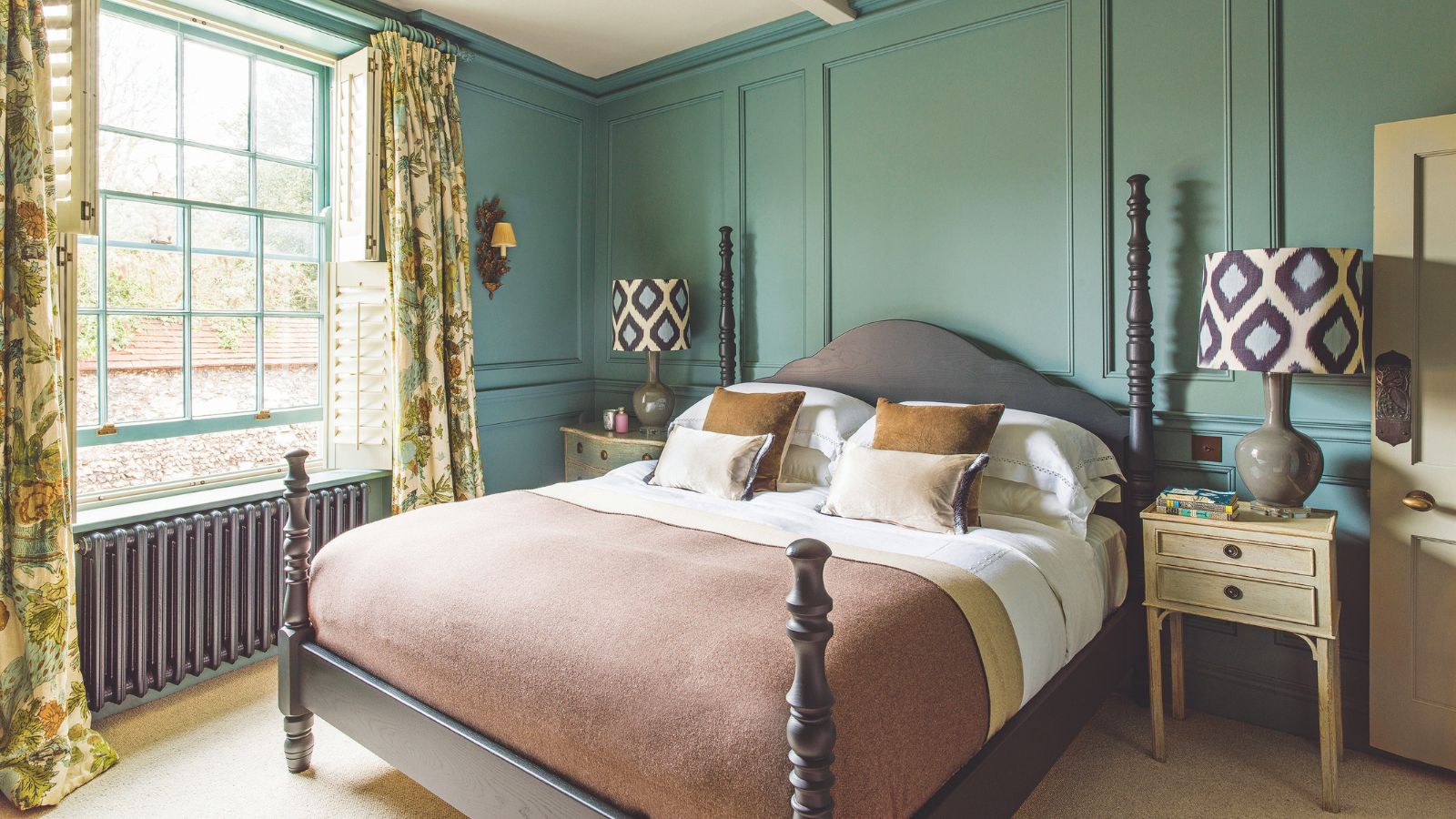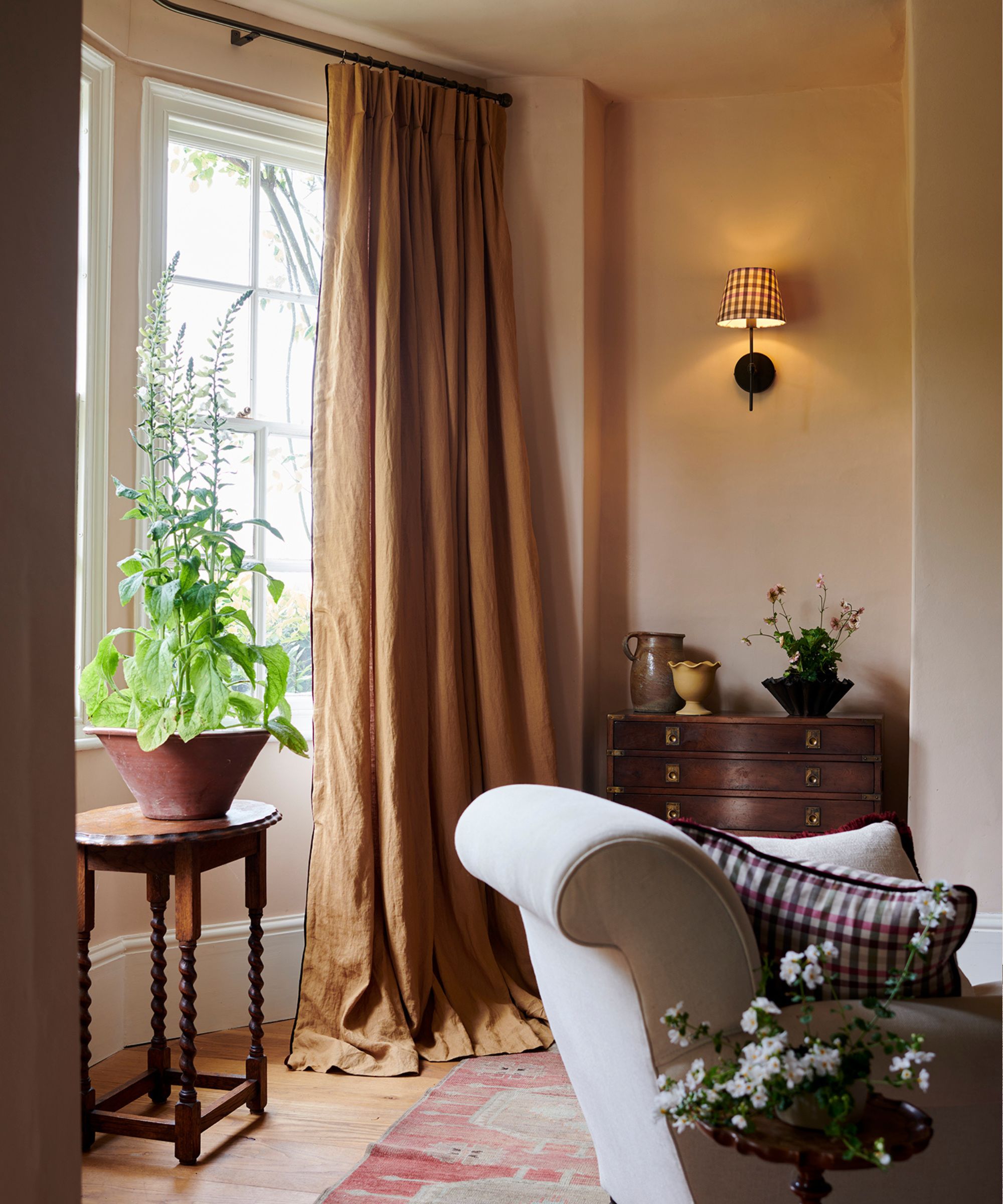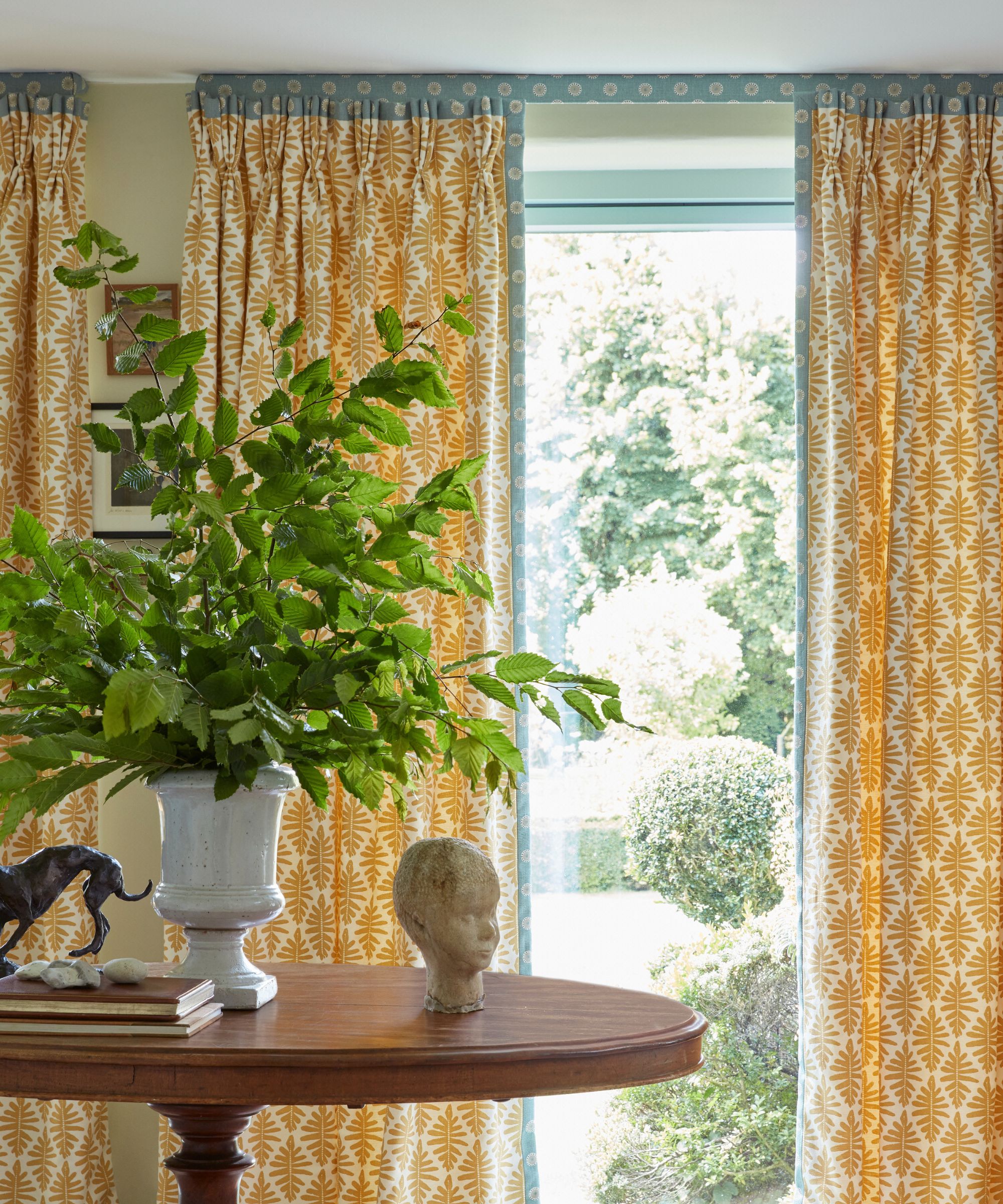How to measure for curtains – everything you need to consider to get the right width and length for your style and space
Learn how to measure for curtains to ensure your arrangement hangs beautifully


Eleanor Richardson
Curtains look their best when they drape elegantly and seamlessly. Once you've selected the style you're after, it's crucial to meticulously measure your drapes so your arrangement can hang beautifully and filter the light in the right way for your space.
Curtains come in all forms, from sheer drapes that allow plenty of light in, to heavier styles that ensure complete privacy and coziness at all hours of the day. No matter what style you opt for, striving for accuracy will result in a stylish and flowing design that fulfills your tastes and everyday practicalities.
The right fit is crucial for whichever curtain ideas you go for. Curtains that aren’t wide enough won’t show the fabric to its best advantage, and those that aren’t long enough can look awkward or old-fashioned. So here we break down the easiest way to measure for curtains of all types, so you can create the perfect look for your space.
How to measure for curtains

Measuring for curtains will differ depending on whether you are going bespoke and sending your measurements to a curtain maker (or if a brand offers a made-to-measure service) or if you are shopping from standard measurements and buying off the rack.
Standard curtain widths are usually 48 inches at off-the-shelf stores (although always check this in the product description as it may vary with brand and style). Standard curtain lengths range from 63, 84, 96, 108, to 120 inches (again, always double-check before ordering).
If you are going bespoke, there's more to consider when measuring for curtains, because there are more options, but we will cover all you need to know here.
The key to the process of how to measure for curtains is accuracy, and it’s essential to have a steel tape measure like this one from Amazon because fabric versions can stretch, resulting in incorrect measurements. You might also need a sturdy step ladder and a notebook to record the measurements.
Design expertise in your inbox – from inspiring decorating ideas and beautiful celebrity homes to practical gardening advice and shopping round-ups.
1. Decide whether you'll use a pole or track
Soft furnishings expert at Graham & Brown, Poppy Ashworth, says, 'Before buying curtains, the first thing to decide is whether you’ll use a pole or track – this affects both style and measurements. A lot of measuring is down to the style of curtain you'd like and what you'll be using to hang them.'
'Poles are visible and decorative, suited to various curtain types. Tracks are sleek and often hidden. Always measure after installation of the pole or track, as the curtain width is based on this, not the window.'
And also consider what curtain types you'll be opting for, such as eyelets, pencil pleats, pinch pleats or waves, as they will play a part in which rod or track works best.
2. Pick the positioning of your rod
As Poppy mentions, the position of your rod or track will affect the measurements of your curtains, so you need to decide where this will be fitted first.
Curtains should, in general, be hung both higher and wider than the window. The reason? The window will feel bigger, but it will also allow maximum light into the room. With the curtains open, all the glass will be exposed and the room will be brighter.
If you are hanging curtains with a rod, plan to position the curtain rod around 8 to 10 inches above the window and so that it extends around 10 to 12 inches on each side of the window.
In a room with very high ceilings, you could place the rod some 12 to 24 inches above the window, or fix it just below the crown molding.
3. Measure the width
Curtains always need to be bigger than the window they are covering, so never use the window size as guidance for your curtain width. You want to use the width of your pole to help.
Bare in mind that curtains should be able to be pulled back beyond the window frame on either side to let plenty of light into the room and to exaggerate the window's proportions, but still look full when pulled across.
Measure the total length of the curtain rod between finials to supply to your curtain maker, and they will help decide on how much fabric width you need based on the look you are after. Custom-made drapes will have the correct fullness according to their type, which can be between 1.5 and three times the width of the pole.
If you are measuring for made-to-measure curtains, think about the look you want to create. 1.5 times the width of the pole will give you some fullness when the drapes are pulled back, but not much. If you want them to look really full with lots of fabric on either sides of your window, double the width of your pole or track. If you are choosing sheers or linen drapes, it's recommended to go even wider as these thin fabrics don't hang flat.
4. Measure the length
Before measuring the length of your curtains, you should determine where you want them to end. There are a number of classic curtain length styles, but the three most popular are:
1. Bottom of the window (this typically ends at the window sill or just below)
Curtains that finish at the window sill can be appropriate for kitchen window treatments, whereas they may look awkward in living spaces and bedrooms. They also work well for bathroom windows for a tidy look that won't get in the way of your daily routine. Café curtains are a good option for sill-length drapery. For this style, measure from rod to sill (or just below if you want the curtain to hide the side rather than sit on it) to find your ideal length.
2. Just below the floor (known as 'kiss')
Floor-length curtains are often preferred for living room curtains.
If you want your curtains to graze the floor, measure from the rod to the floor meticulously. Measure from the top of the rod to 3/8 of an inch above the floor for floor-length curtains. Another 1 to 3 inches added to the length will brush the floor.
Bear in mind that you should always take several measurements of the length to allow for flooring that isn’t completely level. Nordic Knots, the Scandinavian home textile company, advises to 'Measure the length from the floor to your track or rod (or to the top of the ring if you’re using hooks) and add half an inch. This small addition gives the curtain a soft, just-touching-the-floor effect, tailored without being too rigid.'
3. Puddled to the floor (a 'puddle' of fabric gathers on the floor)
Curtains that puddle on the floor are very in right now and add a luxurious, soft feel to a room, making this length ideal for bedroom curtains.
Lengthwise, you must consider how much drapery you want. An extravagant puddle requires adding 6 to 12 inches to the rod-to-floor distance, but for a more subtle effect, add 1 to 4 inches.
Bear in mind that curtains that puddle on the floor aren’t as easy to open and close, so they're best used in spaces that require minimal use. They’re more inclined to gather dust, too, so do need more maintenance.
Always remember to account for the header type you're using, as certain styles will affect the length of your curtain.
For example, a pinch pleat is gathered at the top of the curtain, meaning you'll need to factor this in when you're measuring, as more fabric is being used. Generally, curtains should be floor length or longer for the best effect. That’s even the case if they hang behind furniture, as they should never look less than generous.
FAQs
How wide should curtain panels be?

While there are nuances, the general guideline on how wide curtain panels should be is easy to remember. To ensure panels look ample and drapey when closed, they should have a combined width that is two to two-and-a-half times the width of the window.
‘Two hundred per cent fullness is an industry standard for a good rippling of the fabric,’ suggests Noelle Isbell of Noelle Interiors. ‘For example, if you have a 6-foot width opening, you would specify 12-foot width fabric.'
It’s recommended that you opt for and even wider curtain panels if they are sheers. Kiley Jackson of Jackson Warren Interiors explains the difference between specifying fabric for non-sheer and sheer curtain panels. ‘We allow enough fabric for a combined two-and-a-half times fullness (referring to both panels combined),’ she says. ‘For sheers, it’s three to three-and-a-half times fullness.’
How wide should curtains extend past a window?

Ideally, extend the curtain rod by four inches either side of the window as a minimum, and up to around 12 inches as a maximum. This allows the curtains to, at the least, obscure less of the glazing when they’re open to allow maximum natural light into the room. It also creates the illusion of a wider window.
This won’t be possible with every window, as some are located without sufficient wall space on either side. But if you can, it’s worth it for a grander looking window and a brighter room in daylight hours.
Measuring for curtains is not always a straightforward job, and there's a lot to consider. If you are going bespoke with your drapes, speak with your designers, as usually they will come and measure for your curtains as part of their service, which will save you having to work things out yourself. They can also offer guidance on styles and the right lengths for the space you are working with.
If you are measuring for store-bought curtains, just be patient and measure twice. Using your pole or track as the guide makes things so much simpler, so do make sure that's installed before you order your drapes.

Sarah is a freelance journalist and editor. Previously executive editor of Ideal Home, she’s specialized in interiors, property and gardens for over 20 years, and covers interior design, house design, gardens, and cleaning and organizing a home for Homes & Gardens. She’s written for websites, including Houzz, Channel 4’s flagship website, 4Homes, and Future’s T3; national newspapers, including The Guardian; and magazines including Future’s Country Homes & Interiors, Homebuilding & Renovating, Period Living, and Style at Home, as well as House Beautiful, Good Homes, Grand Designs, Homes & Antiques, LandLove and The English Home among others. It’s no big surprise that she likes to put what she writes about into practice, and is a serial house renovator.
- Eleanor RichardsonInterior Design News Editor